eDPI Calculator – Effective Dots Per Inch, Games, Valorant 2025]
To find the effective DPI (eDPI), multiply the DPI of your mouse by your in-game sensitivity setting.
To find the effective DPI (eDPI), multiply the DPI of your mouse by your in-game sensitivity setting.
The eDPI Calculator is used for the gamers. The gamers can standardize their mouse sensitivity across different games. The games include CS, Fortnite, and Overwatch. eDPI, or effective DPI, provides a consistent measure of sensitivity by combining the DPI setting of the mouse with the in-game sensitivity.
This calculation allows players to achieve similar aim precision and movement, regardless of game or platform, which is especially helpful for those who play multiple titles with varying sensitivity settings.
eDPI = DPI ∗ Sensitivity
| Variable | Description |
|---|---|
| eDPI | Effective DPI |
| DPI | Dots per inch (mouse setting) |
| Sensitivity | In-game sensitivity setting |
Example 1:
| Step | Calculation |
|---|---|
| DPI | 800 |
| Sensitivity | 0.5 |
| eDPI Calculation | |
| Result | 400 |
Answer: With a DPI of 800 and sensitivity of 0.5, the eDPI is 400.
Example 2:
| Step | Calculation |
|---|---|
| DPI | 1200 |
| Sensitivity | 0.6 |
| eDPI Calculation | |
| Result | 720 |
Answer: With a DPI of 1200 and sensitivity of 0.6, the eDPI is 720.
The eDPI Calculator is a practical tool. It is used for gamers seeking optimal in-game sensitivity settings. Effective DPI, or eDPI, combines your mouse’s DPI (dots per inch) and in-game sensitivity, creating a single value to help achieve consistent sensitivity across different games.
Calculating eDPI involves multiplying the DPI by the in-game sensitivity, allowing players to maintain familiar settings in diverse gaming environments.
For example, if your mouse DPI is set to 800 and in-game sensitivity is 0.5, the eDPI is 400. This number helps you keep a similar feel across games like CS, Fortnite, and Overwatch, making it easier to switch games without adjusting to new sensitivity settings constantly.
Using this calculator, you only need to enter your current DPI and sensitivity values. The result aids in achieving balanced, accurate control, whether you’re sniping from a distance or engaging in close combat.
To put things in perspective, The eDPI Calculator offers a straightforward way to manage sensitivity settings, enabling smoother transitions across games and enhancing precision in various gaming experiences.
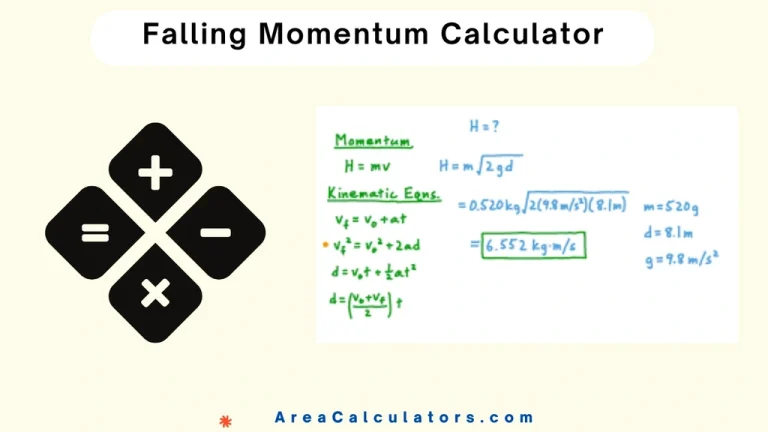
To calculate the momentum of a falling object, multiply its mass (m) by the square root of 2×g×H, where g is gravitational acceleration, and H is the height. The Falling Momentum Calculator is customized to calculate the momentum of an object as it falls from a specific height, factoring in gravitational force. This calculation is…
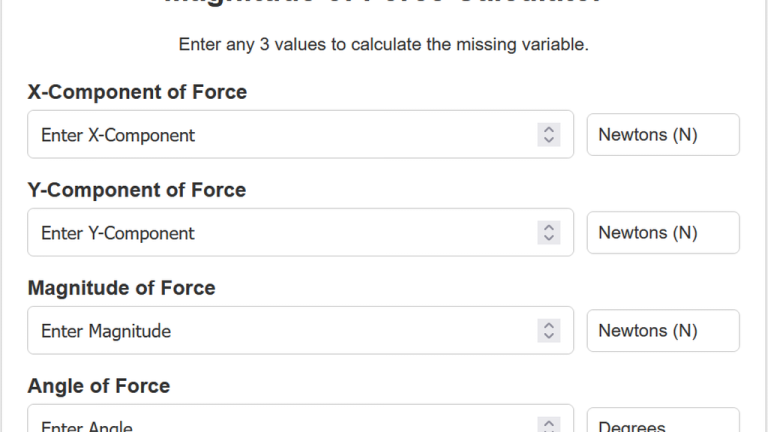
To calculate the magnitude of a force, take the square root of the sum of the squares of the force components along the x and y axes. The Magnitude of Force Calculator is used in physics for calculating the size of a force this is acting on an object. This is particularly useful in mechanics…
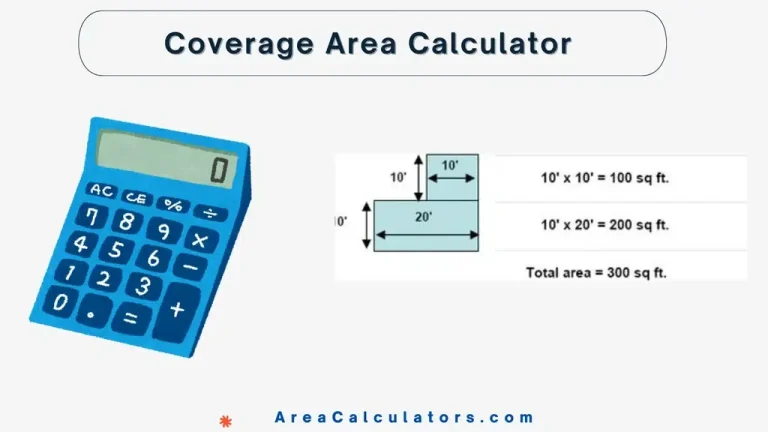
The Coverage Area Calculator is a useful tool in city planning and construction, helping to figure out how much of the land is taken up by buildings. The Coverage Area Calculator helps you determine the total area covered by buildings, land, or other objects. Input the dimensions of the area, whether regular or irregular, to…
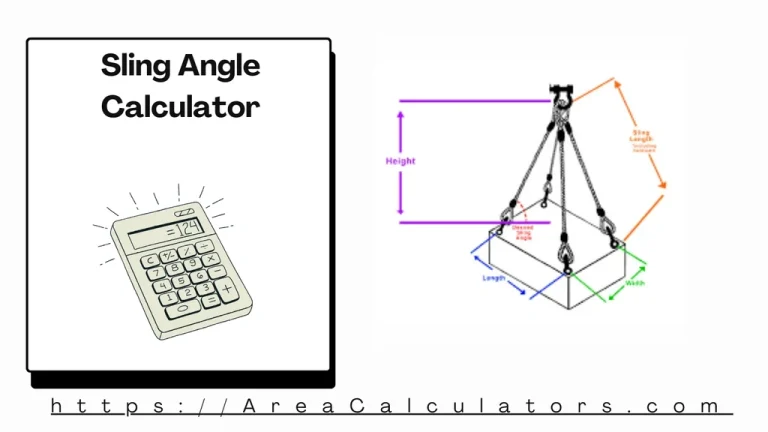
Divide the height by the sling length and calculate the arccosine to determine the sling angle. The Sling Angle Calculator helps calculate the sling angle, which is essential for safe and efficient rigging during lifting operations. When slings are used at an angle, tension increases significantly, affecting load capacity and safety. This tool is ideal…
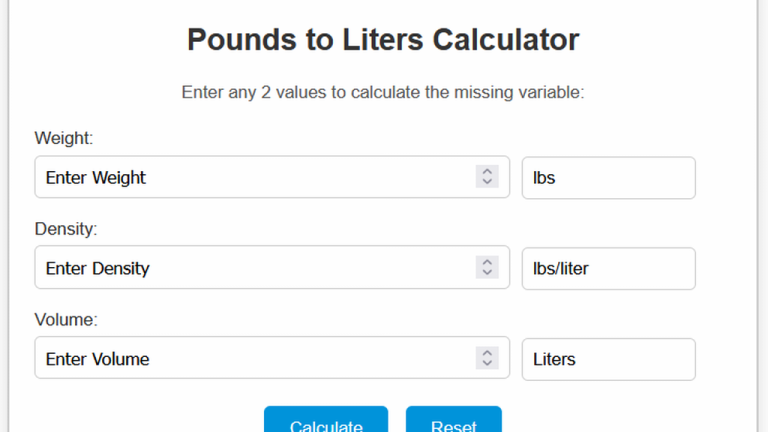
Divide the weight in pounds by the substance’s density to calculate the volume in liters. The Pounds to Liters Calculator is a useful tool for converting weight in pounds to volume in liters, based on the density of the substance. This calculation is vital for applications in various fields such as fuel management, shipping, and…
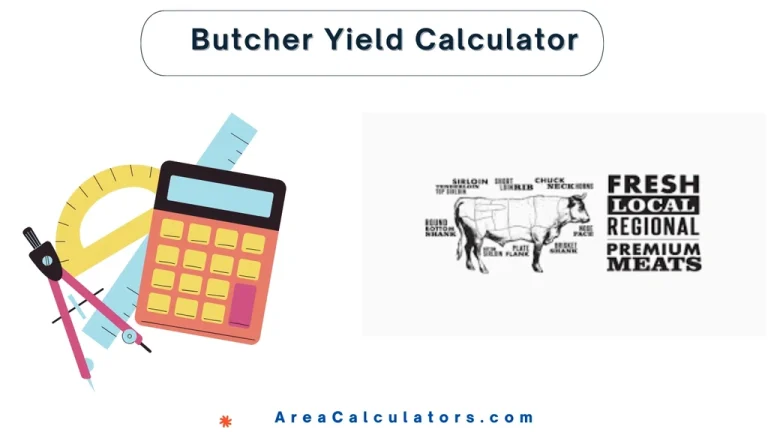
Enter the values to use our basic and advanced Butcher Yield Calculator. Furthermore, read out the formula and solved examples to know how it works. The Butcher Yield Calculator is quite helpful for professional butchers as well as for house use. It helps to understand the yield of meat from an animal after the butchering….